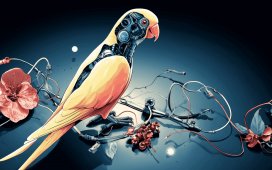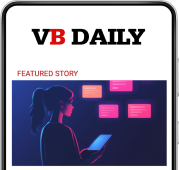Head over to our on-demand library to view sessions from VB Transform 2023. Register Here
It’s not only programming, journalism and content moderation that OpenAI is seeking to revolutionize with the use of its landmark large language models (LLM) GPT-3, GPT-3.5 and GPT-4.
Today, the company published a new blog post titled “Teaching with AI” that outlines examples of six educators from various countries, mostly at the university level though one teaches high school, using ChatGPT in their classrooms.
“We’re sharing a few stories of how educators are using ChatGPT to accelerate student learning and some prompts to help educators get started with the tool,” the company writes.
How educators are already using ChatGPT in their classrooms
The examples range from one educator using ChatGPT as a kind of educational role player, taking on the part of a debate rival or recruiter and engaging students in a dialog; to another teacher using ChatGPT for translation assistance for English-as-a-second-language students; to yet another having their students fact-check the information it generates.
Event
VB Transform 2023 On-Demand
Did you miss a session from VB Transform 2023? Register to access the on-demand library for all of our featured sessions.
The company also includes sample prompts developed by AI influencer and Wharton School professor Ethan Mollick and his wife and fellow professor Lilach Mollick that assist teachers with lesson planning and even turn the default ChatGPT into an “AI tutor” for students.
Asked by this VentureBeat author on X (formerly Twitter) if OpenAI paid Ethan Mollick for use of his and his wife’s prompts, he responded in the negative: “No. I have never taken any money or compensation in any way from OpenAI, including token credits,” adding “In this case, they used prompts and material we have already published.”
Lessons learned?
Of course, the issue of generative AI in the classroom — like with many topics related to the technology — has been fraught with controversy, especially with regards to students using it as a means of cutting corners or avoiding doing their own coursework, such as writing essays.
In fact, several schools, districts, and departments of education around the globe have already banned the application and added it to their internet network blocklists, although the New York City Public School system did an about-face in May and moved to allow teachers to use ChatGPT as they see fit.
OpenAI made headlines earlier this year by releasing an “AI Text Classifier” that was designed to allow anyone, including educators, to copy and paste in text and determine whether or not it was written by AI, but then ended up discontinuing it last month due to its “low rate of accuracy.”
Limitations acknowledged
Today, OpenAI elaborated on the issues with the Text Classifier in a new Educator FAQ (frequently asked questions), which is far more robust and arguably even more helpful for schools than its promotional blog post.
Answering the question of “How can educators respond to students presenting AI-generated content as their own?,” OpenAI answers to say: “While some (including OpenAI) have released tools that purport to detect AI-generated content, none of these have proven to reliably distinguish between AI-generated and human-generated content,” and “When we at OpenAI tried to train an AI-generated content detector, we found that it labeled human-written text like Shakespeare and the Declaration of Independence as AI-generated.”
In addition, OpenAI admits: “There were also indications that it could disproportionately impact students who had learned or were learning English as a second language and students whose writing was particularly formulaic or concise.”
Plus, as the company points out, “even if these tools could accurately identify AI-generated content (which they cannot yet), students can make small edits to evade detection.”
‘Human in the loop’
Instead, OpenAI notes that some teachers have begun asking students to show their conversations with ChatGPT as a form of displaying their critical thinking skills.
Furthermore, while OpenAI says that there is research supporting the fact that “ChatGPT can be a helpful tool, alongside teachers, for providing students with feedback,” it does not link to this specific research, and says “it is inadvisable and against our Usage Policies to rely on models for assessment decision purposes without a ‘human in the loop.’”
In other words — the idea of a teacher handing over most of their duties to ChatGPT is not in the cards yet, or likely the foreseeable future, and same with students and their coursework.
Still, the company clearly wants to promote the idea that ChatGPT can be a useful new tool for both sides of the educational equation, teachers and students alike, joining the familiar classroom sights of pencils, notebooks, computers, and globes.
VentureBeat’s mission is to be a digital town square for technical decision-makers to gain knowledge about transformative enterprise technology and transact. Discover our Briefings.










